In and Around New Orleans
A Tour With LASN
With settled history dating back to the 1700s, Louisiana holds over four centuries worth of stories in its preserved and built environments. Though not the current capital of the state, New Orleans - affectionately known as NOLA - was founded in 1718 and in 1723 became the capital of what was then a French colony. This historically vital port city sits approximately 95 miles above the Gulf of America (formerly known as the Gulf of Mexico) and features architectural elements from the French and Spanish colonialists as well as the enslaved Africans who first settled there. Today, the city is known for its colorful festivals, unique architecture, and the ever-present sounds of jazz. The impact of Landscape Architects in the area is highly specialized and tends towards larger projects like institutional facilities and parks or region-wide water management, due to the city's location on the banks of the Mississippi River. Let LASN take you on a tour of some of the notable landscapes in this vibrant city.
French Quarter & Bourbon Street
Most of the stunning landscapes in New Orleans are either naturally occurring, organically evolved, or belong to established private spaces, resulting in an architectural context that more closely resembles a patchwork quilt rather than a cohesive, commissioned design entrusted to one Landscape Architect or firm. In the historical part of town, the one exception to this might be the French Quarter: the city's oldest and most famous neighborhood. Known for intricate wrought-iron balconies left over from early Spanish control, the area dates back to 1721, when French engineer Adrien de Pauger laid out a grid of the city centered around Jackson Square (see above). Since most of the residences were constructed in a traditional European style with an inner courtyard, the street itself comprises the landscape here. After 1936, a state-sanctioned preservation commission began the work of regulating the aesthetic character of the French Quarter, leading to an increase in art galleries, antique stores, and jazz clubs that attract over 10 million visitors each year. One of the neighborhood's most popular destinations is Bourbon Street, which is famous for its nightlife and live music. Many famous jazz musicians and writers were attracted to this area in the early 1900s as a source of creative stimulus.
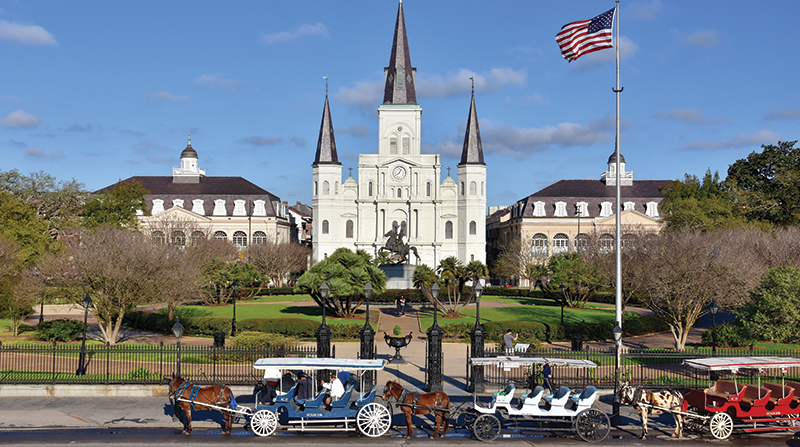
Jackson Square
One of the most recognizable locations in New Orleans, Jackson Square is the heart of the French Quarter. Originally known as Place d'Armes, this public area was laid out as the main public gathering place, specifically for soldiers whose barracks flanked the square. A place d'armes was a traditional element of 18th-century French colonial architecture that centralized a community's main religious and civil buildings while providing a gathering place for official or celebratory purposes. In 1803, the Louisiana Purchase was formalized in the Cabildo, located next to the cathedral, and in 1814, future President Andrew Jackson inspired volunteers there to defend their home against the British, leading to the end of the War of 1812. The plaza was renamed in honor of President Jackson in 1851. In the early days, the square was an open, grassy area, giving way to the current curated garden look brought to life in the mid-19th century by Baroness Micaëla Almonester Pontalba who paid to improve the square and construct Parisian-style row house buildings on either side. To the northwest of this circle-shaped park is St. Louis Cathedral - the oldest continuously active Catholic cathedral in the U.S., according to the Archdiocese of New Orleans. Looking southeast, visitors have a view of Moonwalk Riverfront Park and the Mississippi River. The park is always filled with artists, street performers, and tourists, the latter of which are likely headed to the eastern corner of the square towards the world-famous Café Du Monde for some café au lait and beignets.
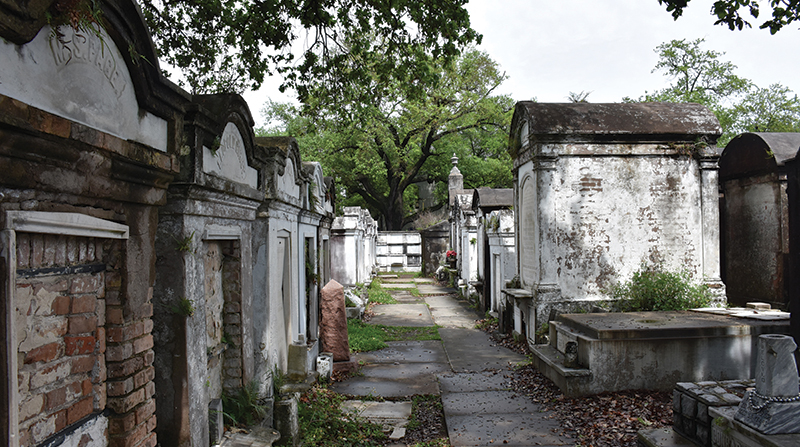
St. Louis Cemetery No. 1 & Save Our Cemeteries
Cemeteries in New Orleans are well known for their above-ground tombs. Due to the area's high water table, coffins cannot be placed in the ground at the risk of becoming water-logged or even displaced, resulting in the 42 historic above-ground cemeteries scattered across the city. Some of these cemeteries are particularly famous for the unique architecture of the tombs that comes from their French, Spanish, and Caribbean influence, and five of them are on the National Register of Historic Places. The oldest extant cemetery in New Orleans - according to Save Our Cemetries - is St. Louis Cemetery No. 1, located just a few blocks from Congo Square in Louis Armstrong Park. Established in 1789, this cemetery holds famous individuals like Voodoo Queen Marie Laveau, first Louisiana Governor William Claiborne, and Homer Plessy of Plessy vs. Ferguson fame. When a plan was proposed in 1974 to demolish the wall vaults in St. Louis Cemetery No. 2 and replace them with chain-link fencing, many in the community were outraged. Preservationist Mary Louis Christovich was one of those citizens who used the momentum to form Save Our Cemeteries, the only non-profit organization in New Orleans dedicated to preserving these historic locations. Volunteers and staff educate the public with guided tours, advocate for related legislation, beautify the cemeteries with clean-up days, and participate in restoration projects both large and small. One of the group's major fundraisers is a cemetery race that is the largest in the United States.
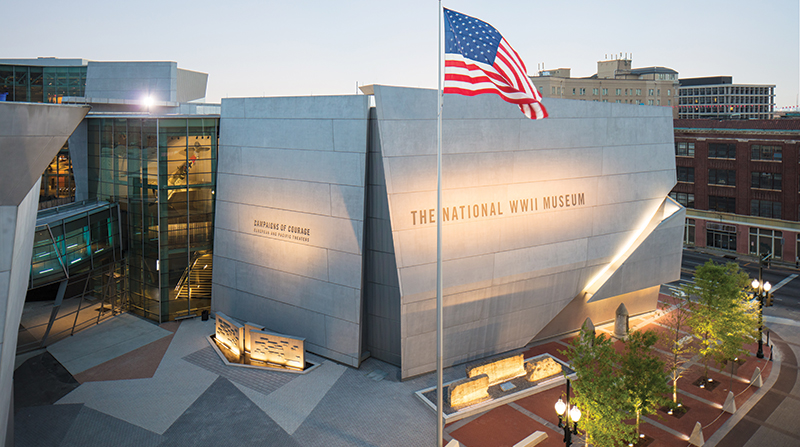
The National WWII Museum
Originally established as The National D-Day Museum in 2000, The National WWII Museum now encompasses seven pavilions that tell the stories of The Second World War. Founded by historian and presidential biographer Stephen Ambrose, the museum arose from Ambrose's conversations with former President Dwight Eisenhower and his extensive research and artifacts about the day the Allies landed on the beaches of Normandy in 1944. New Orleans was chosen to host this museum because of Andrew Higgins, the owner of Higgins Industries whose company produced over 20,000 assault landing craft during the war that became instrumental to the Allies' success. When senators Theodore Stevens (AK) and Daniel Inouye (HI) - both of whom also served in WWII - saw that the museum only told the story of one battle, they promised to get congressional support for a museum covering all aspects of the war. Over the last 25 years, the museum has slowly grown to the seven acres and ten-plus exhibits it is today. OLIN Studio, founded by Laurie Olin, FASLA, over saw the landscape architecture for the most recent additions completed in 2023. During the ASLA Conference, the museum is hosting a special travelling exhibit on the legacy of Bob Hope titled "So Ready For Laughter."
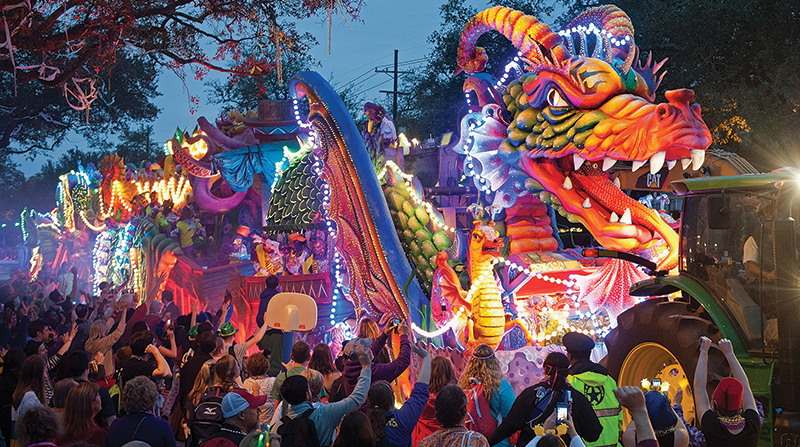
Mardi Gras World & Grounds Krewe
With the first recorded Mardi Gras celebration in Louisiana dating back to 1699, the state has an established history with the holiday. Second only in size to the Carnaval festivities held in Rio de Janeiro, Brazil, New Orleans hosts the most well-known celebration of Mardi Gras in the world, characterized by large parade floats, colorful costumes, and general excess. Traditionally, the success of a Mardi Gras festival was determined by how much waste it produced with streamers and the various trinket "throws" tossed into the crowd by the various "krewes" that put on parades and balls throughout the city. Native New Orleanian and landscape architecture master's student Brett Davis saw this waste and looked to solve it with the formation of a new kind of krewe in 2018. Known as "Grounds Krewe," this group heads the clean-up effort every year during Mardi Gras, working the rest of the year to educate event organizers and provide practical support for low-waste events. The non-profit also sells affordable, eco-friendly parade throws that promote local products, like bags of beignet mix, biodegradable body glitter, and native wildflower seeds - the large majority of which are packaged in recyclable containers. Since 2019, the "Re-Cyclists" Marching Krewe has walked in the parades in eco-pun costumes, like "Marie Can-toinette," picking up trash in retrofitted shopping cart bicycles instead of contributing to the waste. The group recycles approximately 750 gallons every year and only plans on increasing that number. If you want to see these floats up close, head to Mardi Gras World, which is open seven days a week for tours of the workshop where artists create hundreds of floats every year for parades around the world.
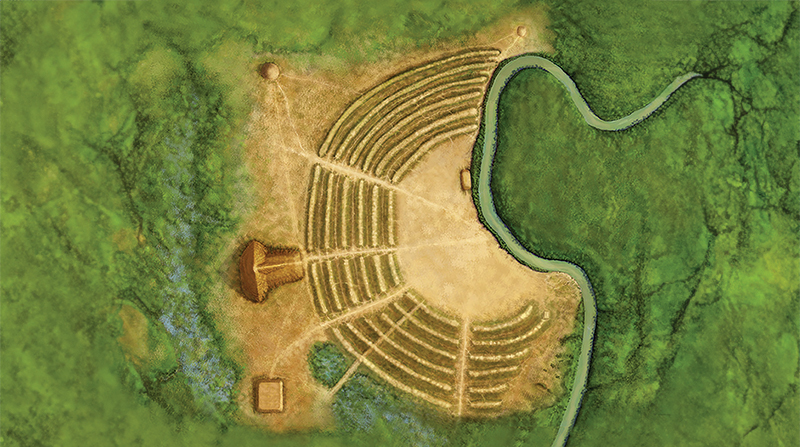
New Orleans Museum of Art (NOMA) & Besthoff Sculpture Garden
The New Orleans Museum of Art (NOMA), opened in 1911, sits on the land originally designed as a public park in the 1870s by engineers from the Olmsted Firm to replace a mosquito-infested swamp that brought disease and prevented the breeze from Lake Pontchartrain from reaching residents in the city. Almost a century later, the Besthoffs - important business and cultural leaders in New Orleans - gave the funds and first pieces of what would be named the Sydney and Walda Besthoff Sculpture Garden. According to NOMA, this garden that wraps the art museum "has become one of the most renowned outdoor art environments in the world." Starting in 2014, Massachusetts-based landscape architecture firm Reed Hilderbrand worked with the museum to expand the garden by almost seven acres, maintaining the riparian terrain, leaning heavily on indigenous Louisiana plantings, and preserving the 200-year-old Live Oaks covered in Spanish Moss. A central lagoon re-oxygenates the water system, creates an outlet for flooding events, and includes a water filtration system that supports the existing plant and animal life. This landscape sets the stage for over 90 works of art that were all available to the public in 2019.
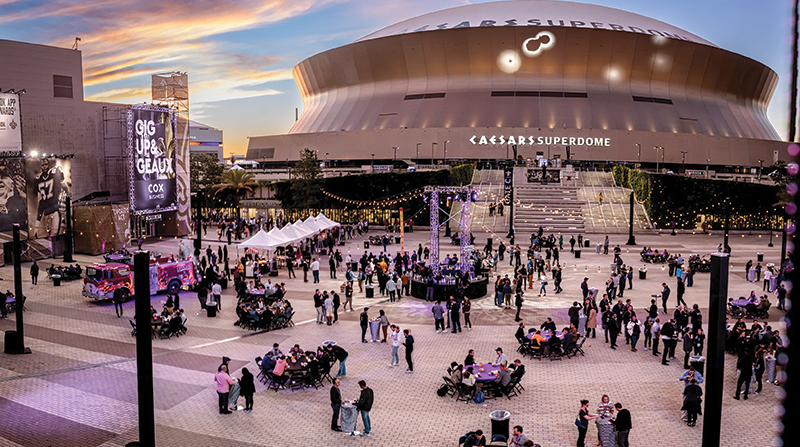
Poverty Point National Monument
Located 4.5 hours north of New Orleans, Poverty Point comprises a 72-foot-tall mound and 6 concentric half-circles overlooking Bayou Macon less than 17 miles from the current path of the Mississippi River. Though their purposes are largely unknown, the area seems to have provided a trading and residential center for largely migratory, pre-agricultural Native Americans between 1700 and 1100 B.C. and was likely closer to the Mississippi River at the time to support people living in the area. The earthworks were built over the course of 600 years, with the largest measuring three-quarters of a mile in diameter. Excavations revealing a lack of burial sites and the presence of structural posts lead experts to believe that the mounds were used for raised housing, which would make sense given the proximity to the Mississippi River and the region's tendency to flood. The earthworks were built with seventy-eight tons of rocks and minerals sourced from up to 800 miles away. That fact, combined with the realization that this could have only been a massive communal effort, solidifies the theory that Poverty Point was a trading hub - the largest in the region. In 1962, the site was designated a National Historic Landmark by the U.S. Department of the Interior and a UNESCO World Heritage Site 50 years later.
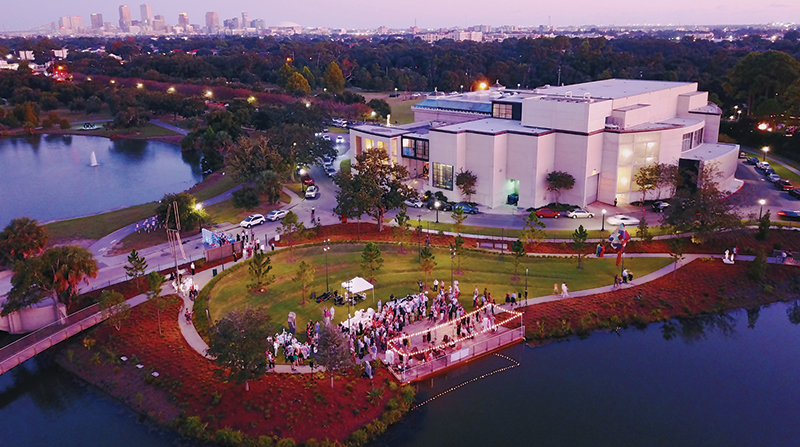
Caesars Superdome & Champions Square
With a diameter of 680 feet, Caesars Superdome was designed in the 1960s by architectural firm Curtis and Davis to be the largest fixed dome structure in the world, a record it still holds today. The dome, located in downtown New Orleans, is the home of the New Orleans Saints NFL Team and has hosted many major venues over the last 50 years. During Hurricane Katrina in 2005, the Superdome was utilized as a shelter of last resort for those unable to evacuate and as a location to temporarily house rescued individuals. Though a large portion of the dome's outer covering was peeled, two holes were created, and the inside was picked clean by the over 30,000 people who sought shelter there, the Superdome was repaired and ready for the 2006 NFL season one year later. Next door, the site of a shopping mall that shut down because of the hurricane reopened in 2010 as Champions Square, a retail and events center designed by multidisciplinary firm AECOM. The venue has gone through various upgrades in the last 20 years, like installing 350-feet-long LED displays (2016) and the largest continuous synthetic turf system in the NFL (2017). The facility is currently undergoing upgrades led by Trahan Architects.





